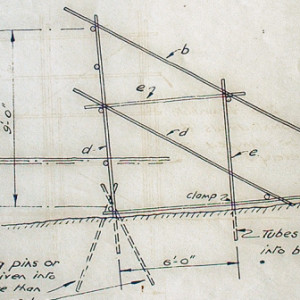A Wallace Sword.
Admiralty scaffolding was a British design of anti-tank and anti-boat obstacle made of tubular steel. It was widely deployed on vulnerable beaches during the invasion crisis of 1940-1941. The barrier comprised upright tubes 9 feet high and 4 feet 10 inches apart, these were connected by up to four horizontal tubes. Each upright was braced by a pair of diagonal tubes, at about 45°, to the rear. A contemporary diagram of the structure can be seen in the extra.
The problem of securing the barriers on sand was overcome by the development of the "sword picket" by Stewarts & Lloyds' ironworks in Glasgow. The device was later known at the Admiralty as the "Wallace Sword" due to its resemblance to the claymore carried by Sir William Wallace. One such sword, which penetrates some 10 feet into the sand has recently become exposed on our local beach.
Barriers varying in length from a couple of hundred feet to three miles were constructed consuming 50% of Britain's production of scaffolding steel. In total many miles of Admiralty scaffolding were erected using more than 15,000 miles of scaffolding tube.


Comments
Sign in or get an account to comment.


